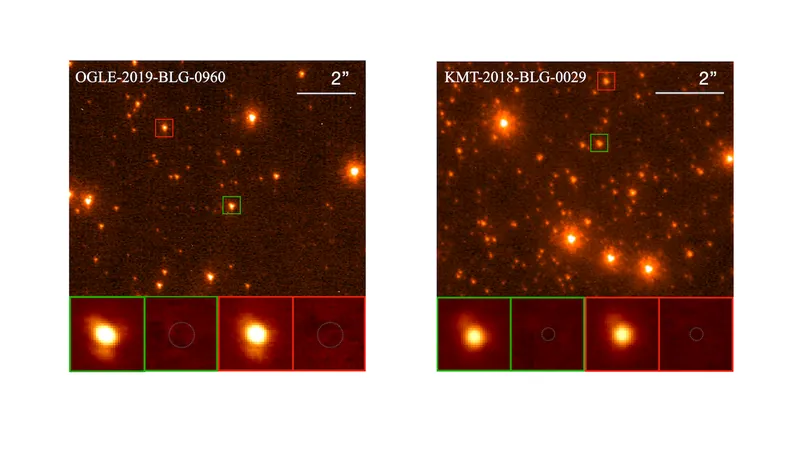
Breakthrough: Rice Scientists Create a 'Molecular Magnifying Glass' to Detect Diseases Early!
2025-09-11
Author: Wei Ling
Revolutionary Discovery in Disease Detection
Researchers at Rice University have unveiled an exciting new technique that allows for unprecedented observation of tiny protein segments within living cells. This groundbreaking method could pave the way for early detection of diseases like Alzheimer’s, Parkinson’s, and cancer, potentially transforming how we understand and treat these conditions.
Published in *Nature Chemical Biology* on September 10, this study harnesses a unique fluorescent probe called AnapTh, engineered to dive into specific subdomains of proteins. This innovative tool enables scientists to track minute environmental shifts in real time—shifts that could signal early disease development.
How It Works: A Closer Look at Protein Behavior
Led by Han Xiao, a professor of chemistry and head of Rice’s SynthX Center, the research team has crafted a 'molecular magnifying glass' that illuminates subtle microenvironmental changes often missed by traditional methods.
"We essentially built a molecular magnifying glass,” remarked Xiao. "This allows us to visualize subtle environmental changes that previously went unnoticed, and those early changes often hold the key to understanding protein-related diseases."
Precision Monitoring of Protein Aggregation
This innovative research proposes that localized environmental changes could precede observable aggregation in proteins. The team utilized AnapTh, a small fluorescent amino acid whose emission shifts based on its immediate surroundings, to probe specific protein sites without obstructing their function or structure.
By monitoring fluorescence changes in living cells, the team achieved unmatched spatial resolution, tracking how various protein segments reacted as aggregation began to occur.
"We wanted a method to light up just one spot in a protein and watch what happens around it in live cells," said Mengxi Zhang, a graduate student and co-first author. "When aggregation starts, some parts become denser and more hydrophobic, while others remain unchanged. Our tool detects those distinctions nearly instantly."
Unveiling the Complexity of Protein Aggregation
Their research revealed that protein aggregation is neither uniform nor straightforward. Instead, specific subdomains exhibited increased fluorescence and spectral shifts, suggesting that aggregation starts at distinct 'hot spots' rather than spreading uniformly as previously believed.
These discoveries challenge conventional views, suggesting that early localized misfolding could serve as critical biomarkers and therapeutic targets.
New Horizons for Drug Discovery
The ability to identify early, specific changes within protein structures offers newfound capabilities in monitoring diseases associated with neurodegeneration and protein misfolding. It could also facilitate the discovery of molecules that intervene before aggregation becomes widespread.
"This platform gives us a jump start," stated Shudan Yang, another graduate student and co-first author. "Now we can test potential inhibitors and see at the very first sign of trouble whether they prevent local misfolding. That kind of precision screening is what drug discovery needs."
Collaborators and Support
The co-authors include several other Rice scientists, further enhancing the team's breadth of expertise. Their research was backed by numerous prestigious organizations, including the Robert A. Welch Foundation and the National Institutes of Health, highlighting its significance in the ongoing fight against complex diseases.



 Brasil (PT)
Brasil (PT)
 Canada (EN)
Canada (EN)
 Chile (ES)
Chile (ES)
 Česko (CS)
Česko (CS)
 대한민국 (KO)
대한민국 (KO)
 España (ES)
España (ES)
 France (FR)
France (FR)
 Hong Kong (EN)
Hong Kong (EN)
 Italia (IT)
Italia (IT)
 日本 (JA)
日本 (JA)
 Magyarország (HU)
Magyarország (HU)
 Norge (NO)
Norge (NO)
 Polska (PL)
Polska (PL)
 Schweiz (DE)
Schweiz (DE)
 Singapore (EN)
Singapore (EN)
 Sverige (SV)
Sverige (SV)
 Suomi (FI)
Suomi (FI)
 Türkiye (TR)
Türkiye (TR)
 الإمارات العربية المتحدة (AR)
الإمارات العربية المتحدة (AR)